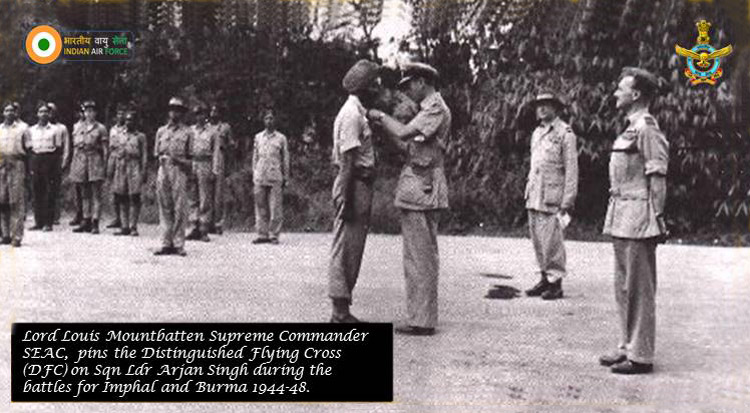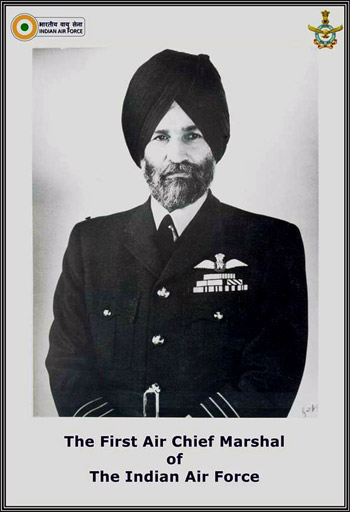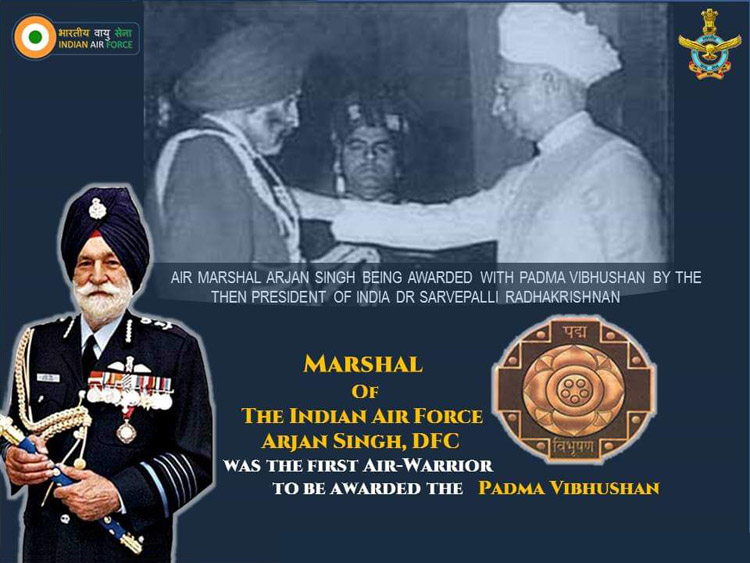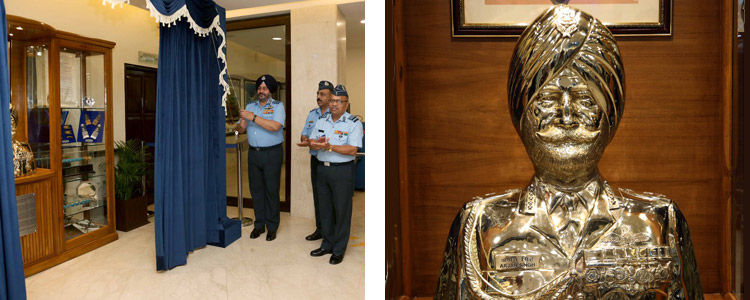INDIAN ARMED FORCES CHIEFS ON OUR RELENTLESS AND FOCUSED PUBLISHING EFFORTS

SP Guide Publications puts forth a well compiled articulation of issues, pursuits and accomplishments of the Indian Army, over the years

"Over the past 60 years, the growth of SP Guide Publications has mirrored the rising stature of Indian Navy. Its well-researched and informative magazines on Defence and Aerospace sector have served to shape an educated opinion of our military personnel, policy makers and the public alike. I wish SP's Publication team continued success, fair winds and following seas in all future endeavour!"

Since, its inception in 1964, SP Guide Publications has consistently demonstrated commitment to high-quality journalism in the aerospace and defence sectors, earning a well-deserved reputation as Asia's largest media house in this domain. I wish SP Guide Publications continued success in its pursuit of excellence.
- Indian Air Force Aims for Full Indigenous Inventory by 2047 — Air Chief Marshal A.P. Singh
- Rajnath Singh assumes charge as Defence Minister for the second consecutive term
- Interim Defence Budget 2024-25 — An Analysis
- Union Defence budget 2024
- Prime Minister Modi Flies in the LCA Tejas
- New Chapter in India-Italy Defence Ties
- Airpower beyond Boundaries
A flight beyond the clouds, beyond compare
April 15 marked the centenary of the first and only Marshal of the Indian Air Force, Arjan Singh and SP's went down a memory lane to show glimpses from the remarkable life that he led until two years ago when he passed away at the age of 98, only to live forever in the hearts of many air warriors.

The potential of greatness lies within each of us, but not everyone harnesses it and those who do, escalate to accomplish extraordinary things in an otherwise ordinary life that many live. Monday, April 15, marked the 100th birth anniversary of one such extraordinary life, the first and the only 'Five star' rank officer of the Indian Air Force, MIAF Arjan Singh DFC. Donning a handsome moustache on his face brightened by his handsome ways of living, Arjan Singh lived a life like no other, in the literal manner of the phrase.
Having his father, grandfather and even his great grandfather serve in the cavalry, Arjan Singh had it in his genes to join the forces but he paved his own distinct way. Born in Lyallpur (now Faislabad) in the Punjab of an undivided India in 1919, Singh studied at Montgomery (now Sahiwal) presently in Pakistan, joined the RAF (royal Air Force) College, Cranwell in 1938 and was commissioned as a Pilot Officer in December next year.
With the onset of World War II in Europe, Singh joined squadron 1 in Ambala. On being commissioned, his first assignment was to fly Westland Wapiti biplanes in the North-Western Frontier Province. After flying against the tribal forces during his short duration with squadron 2, he returned to squadron 1 as a Flying Officer to fly the Hawker Hurricane and then became the commanding officer of the squadron in 1943. "The IAF was established in 1932. And till 1940, there wasn't even a complete Squadron. It was only after I joined in 1940, along with a colleague, that the unit was completed. It had taken over seven long years to build just one Squadron," MIAF Arjan Singh DFC told SP Guide in an exclusive interview in 2007.

This was, however, only a beginning to the many laurels that Singh added to his cap through his life.
"But real change came after World War II started. I joined the IAF's No. 1 Squadron as Pilot Officer early in 1940. Towards the end of 1944, we had 10 Squadrons as the RAF was short of pilots and personnel. So it was really done to help the British in their war with the Japanese whose intention was to capture India. Our services, particularly the army and the air force, fought extremely well and the experience gained in operation under severe conditions and in management was valuable. Even though the officers of the IAF were not among the high command, they had responsible jobs," added the Marshal.

In the year 1944, Singh led the Indian air Force (IAF) squadron into combat against the Japanese frenzy during the Arakan Campaign. Graduating to Hawker Hurricanes, during the Second World War, he flew battlefield air support missions during the Imphal Campaign and provided air support for the advance of the allied forces into Rangoon in Burma. Singh was awarded with the Distinguished Flying Cross (DFC) for successfully leading the squadron in this combat.

Singh was given the command of the IAF Display flight flying Hawker hurricanes which toured India giving demonstrations after the war. Singh had the unique honor of leading the fly-past of more than a hundred IAF aircraft over the Red Fort on 15 August, 1947. "When war started, for example, in Kashmir in 1947-48, it demanded a greater role of the Indian Army but the IAF was also extensively used for air and logistical support," he added.

After being promoted to Wing Commander, Singh also attended Staff College at UK and became the AOC (air officer commanding), Ambala in the rank of Group Captain. Promoted to Air Commodore in 1949, Singh took over the AOC of Operational Command, later known as the Western Air Command (WAC) and had the longest tenure till 1952 and then another term from 1957-1961. Thereby he headed WAC for a total of seven years spread over two tenures, thus setting a record for leading for the longest period, the most important Command in the IAF. Promoted to Air vice Marshal, he was the AOC-in-charge of Operational Command and towards the end of the 1962 war, was delegated the DCAS (Deputy Chief of Air Staff) and became the VCAS (vice chief of air staff) by 1963. He was also the overall commander of the joint air training exercises "Shiksha" held between the IAF, RAF and RAAF (Royal Australian Air Force).
One of the most significant moment in Singh's career happened in 1964, when he was appointed as the Chief of Air Staff in the rank of Air Marshal at the young age of 45 and then promoted as the Air Chief Marshal in 1966. He still remains the youngest officer ever to head the air force. He served as the IAF chief from August 1, 1964 to July 15, 1969, till he retired in August 1969. Arjan Singh was the first Air Chief who kept his flying category till his CAS rank. Singh is also known to have flown 60 different types of aircraft from Pre-WW-2 era biplanes to the more contemporary, Gnats & Vampires, and in transports like the Super Constellation.
The MIAF was always keen on healthy relations. "Good relationship in a service is very important. If the commanding officer is not popular, it reflects in all the ranks and people don't put in their best. In the air force we have a saying that you can fool your superiors but you cannot fool your subordinates—they know exactly what you are. All the decisions taken at a very high level will have short and long term effect on the IAF and that is why seniors must keep in touch with those below."

Sharing his own experience he said, "The method I used was that every time I visited an air force station, I spent a lot of time with the flyers and technicians. We would often sit together at a dispersal area in a forest somewhere and discuss matters freely over a cup of tea. To do that you must have confidence in yourself, which in turn would bring you up to date and instill more confidence in you. During the discussions, you get to know their viewpoints and the difficulties they face. Ultimately, that knowledge helps you in taking good decisions."
He further added, "Be very friendly, but don't get too familiar. Discipline has to be maintained. If an impression is formed that the top man is biased, it derails proper decision- making process and creates disharmony in the unit." Talking about the differences crated between the flying crew and the ground, he said that he never saw any difference. "At times we create a gap by not communicating with each other or failing to acknowledge difficulties unique to a service. However, the divide between the branches should be very narrow and they should have respect for each other."

Another defining time in Singh's career came in September 1965 during the war when Pakistan launched its Operation Grand Slam. It was under his inspiring leadership, the IAF came out with glory in the war with Pakistan in 1965, the very first large scale conflict the IAF of independent India was involved in.
Arjan Singh was also honored with the prestigious Padma Vibhushan, the second-highest civilian award of the nation for his leadership of the air force, and eventually in acknowledgment of the air force's contribution in the war, the rank of the CAS was upgraded to that of Air Chief Marshal and Arjan Singh became the first Air Chief Marshal of the Indian Air Force. Marshal Arjan Singh retired from service as Air Chief Marshal in 1969, aged 50 years.

Singh was looked up to, not just for being a competent officer and displaying unparallel leadership traits but also a gentleman, always humble and adding something meaningful to his life each day. In 1971, he was appointed Ambassador to Switzerland and also accredited to the Vatican in Rome. Marshal Arjan Singh was appointed High Commissioner to Kenya in 1974, during which time he was also accredited to Seychelles. A member of the Minorities Commission from 1978 to 1981, he was also Chairman of the Indian Institute of Technology, Delhi, (1980-1983).
That is not all; the supreme prestige of Arjan Singh's life happened in 2002, when he was presented with the Marshal of the Indian Air Force (MIAF) on April 23 by then President K.R. Narayan. He was the first and only five-star rank Officer of the IAF and only the third service chief to be accorded with the Field-marshal rank. Prior to him, former Army chief Sam Manekshaw was the first to have the Field Marshal title, majorly for his contributions in the military operation to liberate Bangladesh in 1971. Maneskshaw passed away in 2008 at the age of 94. The second title was bestowed on Army chief K M Cariappa who died in 1993 at the age of 94.

With his work, his wisdom and his personality, Arjan Singh left a mark wherever he went and with whomever he met. A philanthropist and an active citizen, Arjan Singh had donated Rs 2 crore for the welfare of retired IAF personnel and their families, and also held deep interest in sports. Even after handing over charge of the IAF, he continued to serve and support the organisation through the creation of a Trust funded entirely by his personal resources, for the welfare of serving and retired personnel of the IAF and their families:
To honour and perpetuate his memory, in a touching gesture on its part, the IAF has named a newly established air base at Panagarh in West Bengal as "Air Force Station Arjan Singh". Dearly remembering the great and beloved man that MIAF Arjan Singh DFC was, Indian Air Force celebrated his birth centenary through lectures, seminars and half Marathons that were planned at 100 Air Force Stations across the nation on April 14.
The exemplary air warrior had passed away in 2017 at the age of 98 after a cardiac arrest, but only to live forever as an inspiration in the hearts of many air warriors. As the IAF put, 'MIAF Arjan Singh DFC's dynamic personality, professional competence & honesty of purpose in his service to IAF & the country truly set him apart as a leader & an icon of the IAF.' During his three-decade long service with the IAF, he worked relentlessly to nurture and strengthen the foundations of the service, displayed admirable leadership and emerged as a role model for every air warrior.






